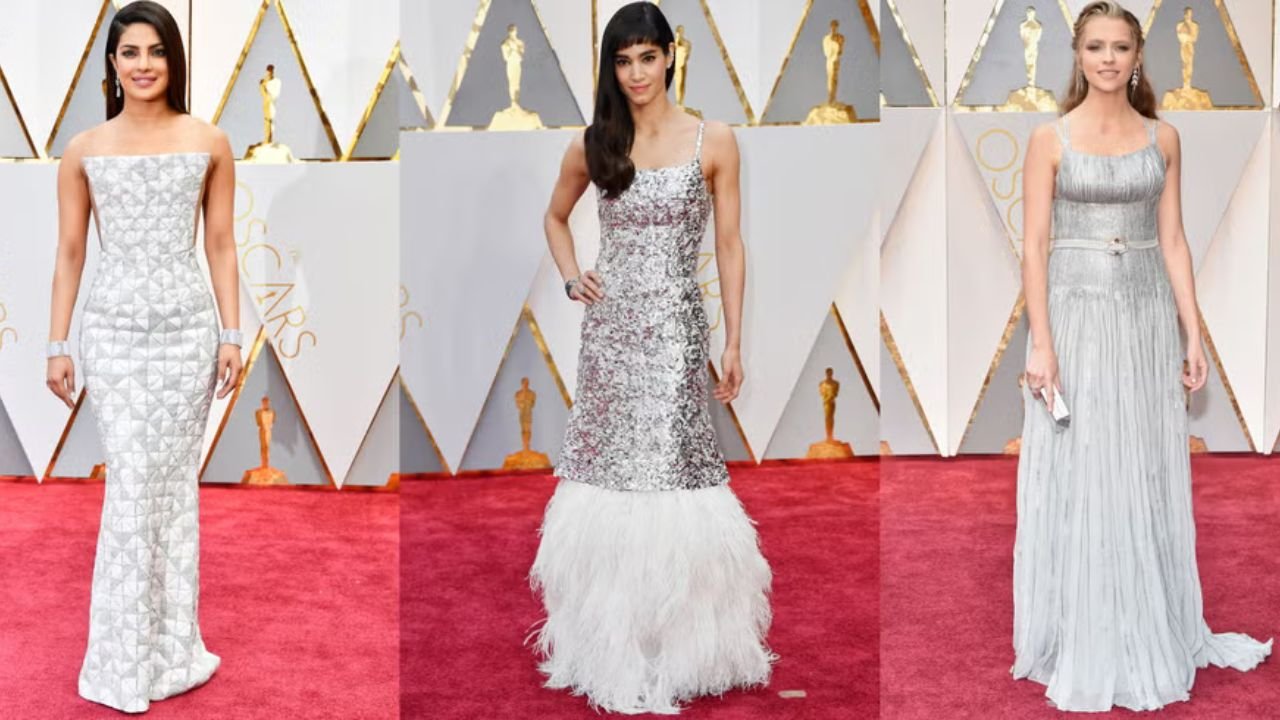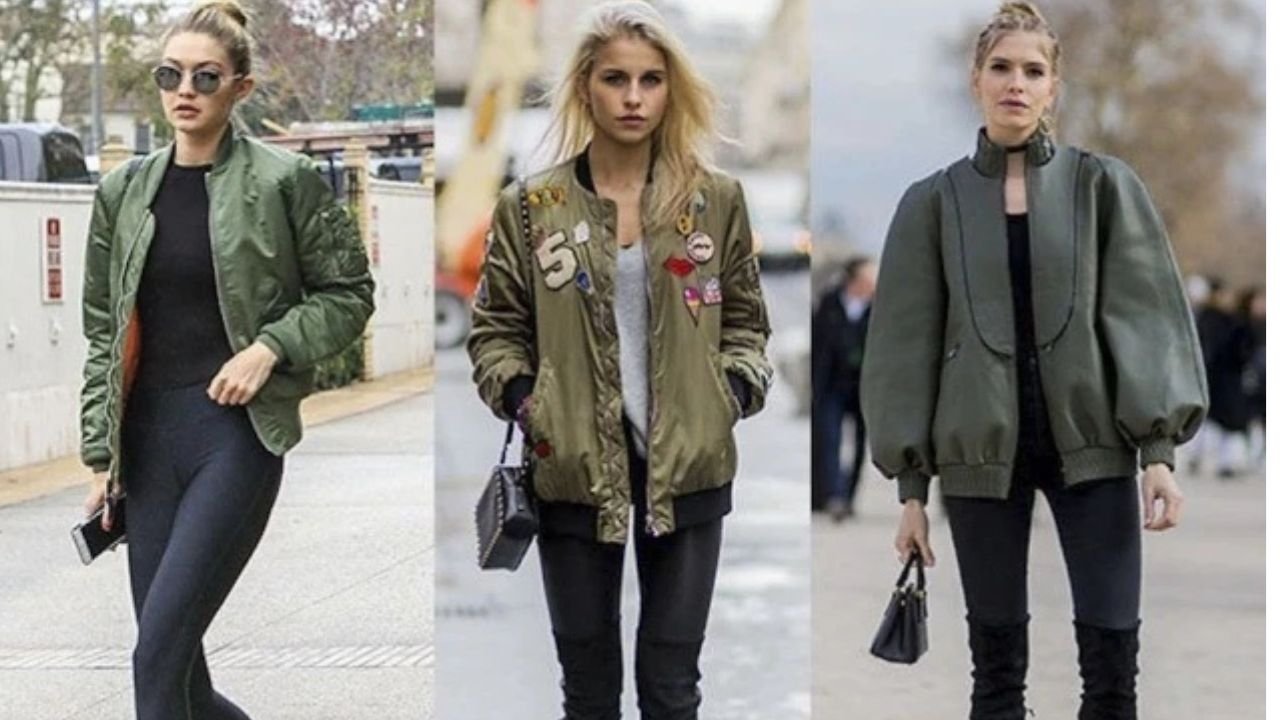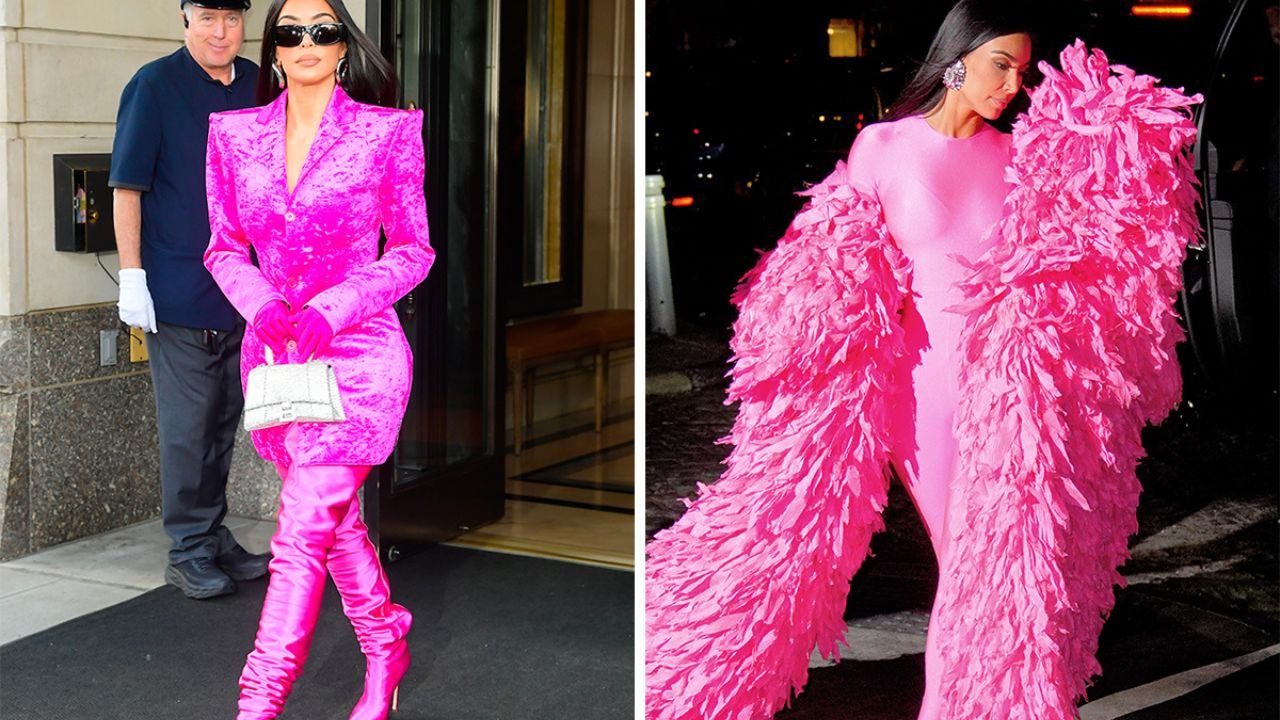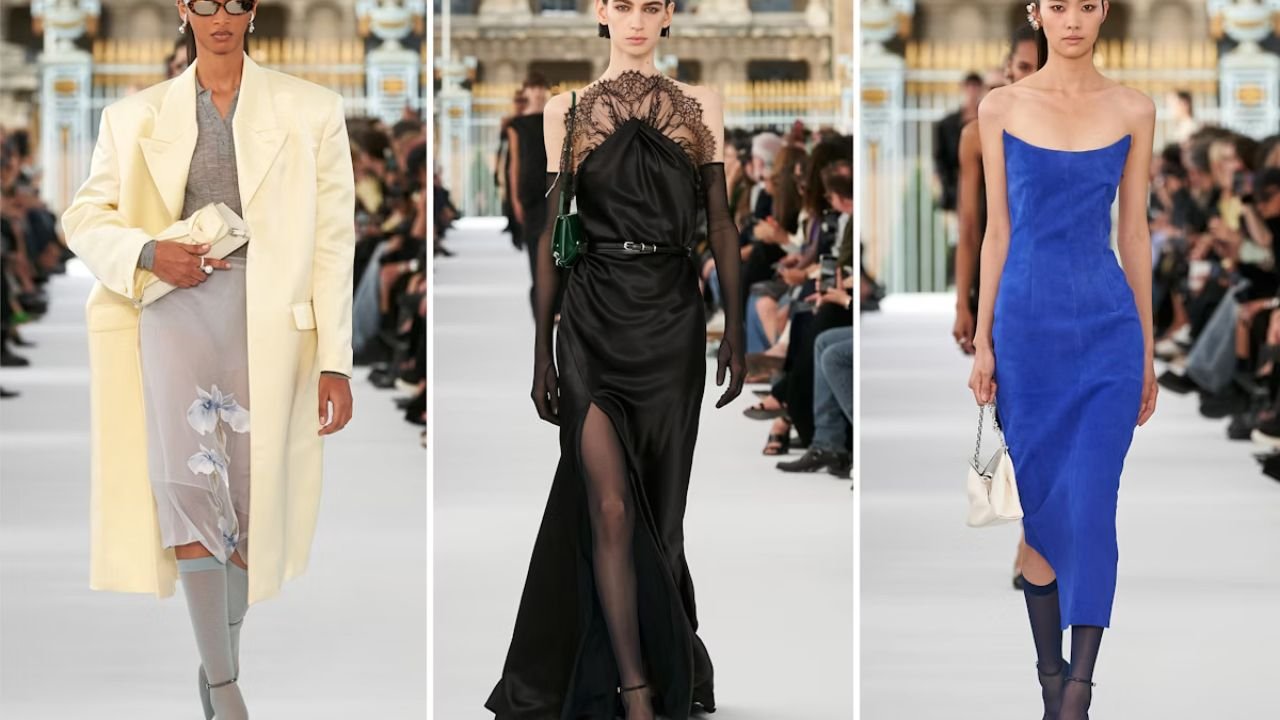Introduction
In the ever-evolving world of fashion, few elements manage to captivate the imagination and command attention quite like embellishments. When it comes to red carpet glamour, embellishments are the ultimate expression of artistry, luxury, and individuality. They transform simple silhouettes into masterpieces, turning heads and defining trends.
From sparkling sequins and intricate beadwork to opulent embroidery and daring appliqués, embellishments have long been a signature feature of high-fashion moments. They symbolize celebration, elegance, and sometimes even rebellion against minimalism.
In this comprehensive exploration, we delve into the history and evolution of embellishments in red carpet fashion, examine various types and techniques, highlight iconic moments and designers, offer styling tips, and look ahead to future trends. Whether you’re a fashion enthusiast, designer, or simply someone enchanted by the sparkle and craftsmanship of embellished gowns, this guide will illuminate the significance and artistry behind this timeless trend.
The Historical Context of Embellishments in Fashion
Origins and Early Uses
Embellishments have been a part of human adornment for millennia, dating back to ancient civilizations. Egyptian pharaohs, for example, adorned themselves with gold, gemstones, and intricate beadwork to signify status and divine connection. Similarly, the ornate costumes of Byzantine and Mughal courts featured extensive embroidery, pearls, and precious stones.
In the context of fashion history, embellishments were often reserved for royalty, nobility, and religious figures, serving as symbols of power, wealth, and spiritual significance. During the Middle Ages and Renaissance periods, elaborate embroidery, sequins, and precious stones decorated royal garments and ceremonial attire.
Embellishments in the 20th Century
Fast forward to the 20th century, where fashion became more accessible yet still retained an emphasis on luxury and craftsmanship for the elite. Hollywood’s golden age of glamour in the 1930s-1950s popularized embellished evening gowns, often covered in sequins, rhinestones, and embroidery, worn by icons like Marilyn Monroe, Elizabeth Taylor, and Grace Kelly.
The 1960s and 1970s saw a shift towards more experimental and rebellious styles, with embellishments taking on new forms—psychedelic beading, metallic accents, and bold appliqués—mirroring social and cultural changes.
The Rise of Haute Couture and Embellishments
Haute couture houses in Paris, Milan, and New York elevated embellishments to an art form. Designers like Jean Louis, Christian Dior, and Balmain became renowned for their intricate beadwork, embroidery, and appliqué techniques. Embellishments were not merely decorative; they told stories, conveyed messages, and showcased technical mastery.
In the 21st century, brands like Elie Saab, Zuhair Murad, and Giambattista Valli have continued this legacy, transforming embellishments into symbols of luxury and artistic expression.
Types of Embellishments in Red Carpet Fashion
Embellishments encompass a vast array of techniques and materials. Understanding their nuances helps appreciate the craftsmanship and artistry behind iconic red carpet looks.
1. Sequins
Description: Small, shiny discs sewn onto fabric to create a sparkling surface.
Usage: Sequins are the quintessential embellishment for glamour, often used in evening gowns, cocktail dresses, and accessories. They reflect light beautifully, adding movement and radiance.
Historical note: Sequins originated from ancient India and China, where they were made from gold, silver, or shell.
Modern trends: The 2000s saw a surge in sequin-heavy dresses, with designers experimenting with shapes, sizes, and colors. Today, sequins are used both for full coverage and subtle accents.
2. Beadwork and Embroidery
Description: Intricate stitching of beads, pearls, or threads to create textured patterns.
Usage: Bead embroidery elevates a simple gown into a piece of art. It can depict motifs—floral, geometric, or narrative.
Highlight: The craftsmanship involved is immense, often requiring hundreds of hours of work by skilled artisans.
Notable examples: Elie Saab’s embroidered gowns often showcase exquisite beadwork, creating a three-dimensional effect.
3. Crystals and Rhinestones
Description: Faceted stones that mimic precious gems, applied via glue or sewn onto fabric.
Usage: Crystals add a luxurious sparkle, especially in evening wear. Swarovski is a leader in this space.
Trend: Embellishments with crystals are often used in shoulder details, waistbands, or as all-over accents.
4. Appliqué and Fabric Manipulation
Description: Decorative fabric pieces sewn onto the main garment, sometimes with added embroidery or beading.
Usage: Appliqué allows for creative expression—floral motifs, artistic patterns, or symbolic elements.
Example: Valentino’s floral appliqué gowns often make bold statements.
5. Feathers and Fringe
Description: Lightweight embellishments that add movement and texture.
Usage: Feathers are often used in evening gowns and accessories to evoke glamour and drama.
6. Metallic Accents and Studs
Description: Metal elements such as studs, chains, or metallic thread embroidery.
Usage: Adds an edgy or futuristic vibe, balancing luxury with rebellion.
7. 3D Embellishments and Sculptural Elements
Description: Embellishments that create volume or sculptural shapes, often made with fabric, foam, or plastic.
Usage: Seen in avant-garde couture, but increasingly incorporated into red carpet gowns for a high-impact look.
Iconic Embellished Red Carpet Looks
The 1950s and 1960s Glamour
- Elizabeth Taylor, 1956 Oscars: Her classic strapless gown covered in shimmering beads and sequins set the standard for Hollywood glamour.
- Audrey Hepburn, 1961 Oscars: A simple yet elegant dress with subtle embellishments—tiny sequins or beads—highlighted her understated sophistication.
The 1980s Opulence
- Madonna’s cone bras and metallic dresses: Embellishments took a rebellious turn, with metallic studs and exaggerated shapes defining the era’s bold aesthetic.
- Elizabeth Taylor’s jewelry: While not clothing embellishments, her collection of diamonds and pearls set the tone for opulence.
The 2000s and Early 2010s
- Jennifer Lopez, 2000 Grammys: Her curve-hugging dress covered in sequins and rhinestones exemplified maximal glamour.
- Lady Gaga, 2010 Grammys: Her avant-garde, fully embellished outfits pushed boundaries and redefined red carpet fashion.
Recent Iconic Looks
- Rihanna’s 2018 CFDA Fashion Awards: A custom Guo Pei couture gown with gold embroidery and embellishments, blending cultural heritage with high fashion.
- Janelle Monáe, 2020 Oscars: A tuxedo-inspired embellished look with metallic accents and intricate beadwork, challenging gender norms and showcasing craftsmanship.
Designers and Brands Known for Embellished Red Carpet Gowns
High Fashion and Haute Couture Houses
- Elie Saab: Renowned for ethereal, heavily embellished gowns featuring embroidery, sequins, and beadwork.
- Zuhair Murad: Known for intricate detailing, luxurious fabrics, and opulent embellishments.
- Giambattista Valli: Famous for romantic and elaborate embroidery.
- Valentino: Celebrated for refined appliqué and embroidery, often inspired by art and nature.
Contemporary Designers
- Prabal Gurung: Incorporates embellishments with modern silhouettes.
- Ralph & Russo: Known for regal, heavily embellished couture gowns.
- Michael Cinco: His designs feature intricate beadwork and crystal embellishments.
Celebrity Collaborations and Custom Pieces
Many celebrities work with bespoke designers or create custom looks that feature unique embellishments, often pushing the boundaries of craftsmanship and innovation.
Styling Tips for Embellished Red Carpet Looks
1. Balance and Proportion
- When wearing heavily embellished gowns, keep accessories minimal to avoid overwhelming the look.
- Pair a heavily embellished dress with simple jewelry—think studs or small hoops.
2. Focus on One Statement
- Highlight one feature—such as a gown with intricate beadwork or a dress with dramatic appliqué—to create a balanced aesthetic.
3. Consider the Venue and Theme
- Opulent embellishments suit formal, black-tie events.
- For themed or avant-garde events, experiment with sculptural and innovative embellishments.
4. Footwear and Accessories
- Keep shoes elegant and understated if the gown is heavily embellished.
- Use accessories to complement the embellishments—like a clutch with subtle sparkle or metallic accents.
5. Hair and Makeup
- For embellished looks, opt for sleek hair or simple updos to keep the focus on the dress.
- Makeup should enhance the overall look—think shimmering eyes or bold lips that complement the embellishments.
6. Comfort and Mobility
- Ensure that embellishments do not hinder movement or comfort—many couture gowns are reinforced with skilled craftsmanship to balance embellishment with wearability.
Future Trends in Embellishments for Red Carpet Fashion
1. Sustainable Embellishments
- Increasing use of eco-friendly materials like recycled sequins, biodegradable beads, and plant-based embroidery threads.
- Ethical sourcing of crystals and gemstones.
2. Technological Integration
- Incorporation of LED lights, fiber optics, and smart textiles into embellishments for dynamic, interactive looks.
- 3D printing techniques enabling intricate, custom embellishments.
3. Minimalist Embellishments
- A shift toward understated embellishments—delicate beading, subtle embroidery—that emphasize craftsmanship over excess.
4. Cultural and Artistic Inspirations
- Embellishments inspired by indigenous crafts, traditional textiles, and global motifs, promoting cultural appreciation and diversity.
5. Customization and Personalization
- Monogramming, bespoke beadwork, and personalized appliqué to create unique, meaningful pieces.
Challenges and Considerations
While embellishments elevate a look, they also come with challenges:
- Cost and Time: High-quality embellishments require skilled artisans and extensive labor.
- Weight and Comfort: Heavy embellishments can be uncomfortable; designers must balance aesthetics with wearability.
- Durability: Embellished gowns must withstand movement and transportation without damage.
- Environmental Impact: Responsible sourcing and eco-conscious techniques are increasingly important.
Conclusion
Embellishments remain an enduring and dynamic element of red carpet fashion, embodying artistry, craftsmanship, and glamour. From their ancient origins to contemporary innovations, they continue to inspire designers and captivate audiences worldwide. Whether through shimmering sequins, intricate beadwork, or avant-garde sculptural details, embellishments transform garments into works of art, making every red carpet appearance a celebration of beauty and creativity.
As we look toward the future, the integration of sustainable practices, technology, and cultural influences promises to keep embellishments at the forefront of high fashion. For fashion enthusiasts and designers alike, understanding and appreciating the artistry behind embellishments opens the door to more innovative, responsible, and breathtaking creations.
Final Thoughts
Embellishments are more than just decorative details—they are storytelling tools that convey emotion, craftsmanship, and identity. Whether you’re aiming to craft a show-stopping gown or simply admire the artistry behind red carpet looks, recognizing the significance of embellishments enriches your appreciation of fashion’s artistry.
Let the shimmer, sparkle, and intricate craftsmanship inspire your own style journey, and remember: in the world of fashion, sometimes it’s the embellishments that make all the difference.




